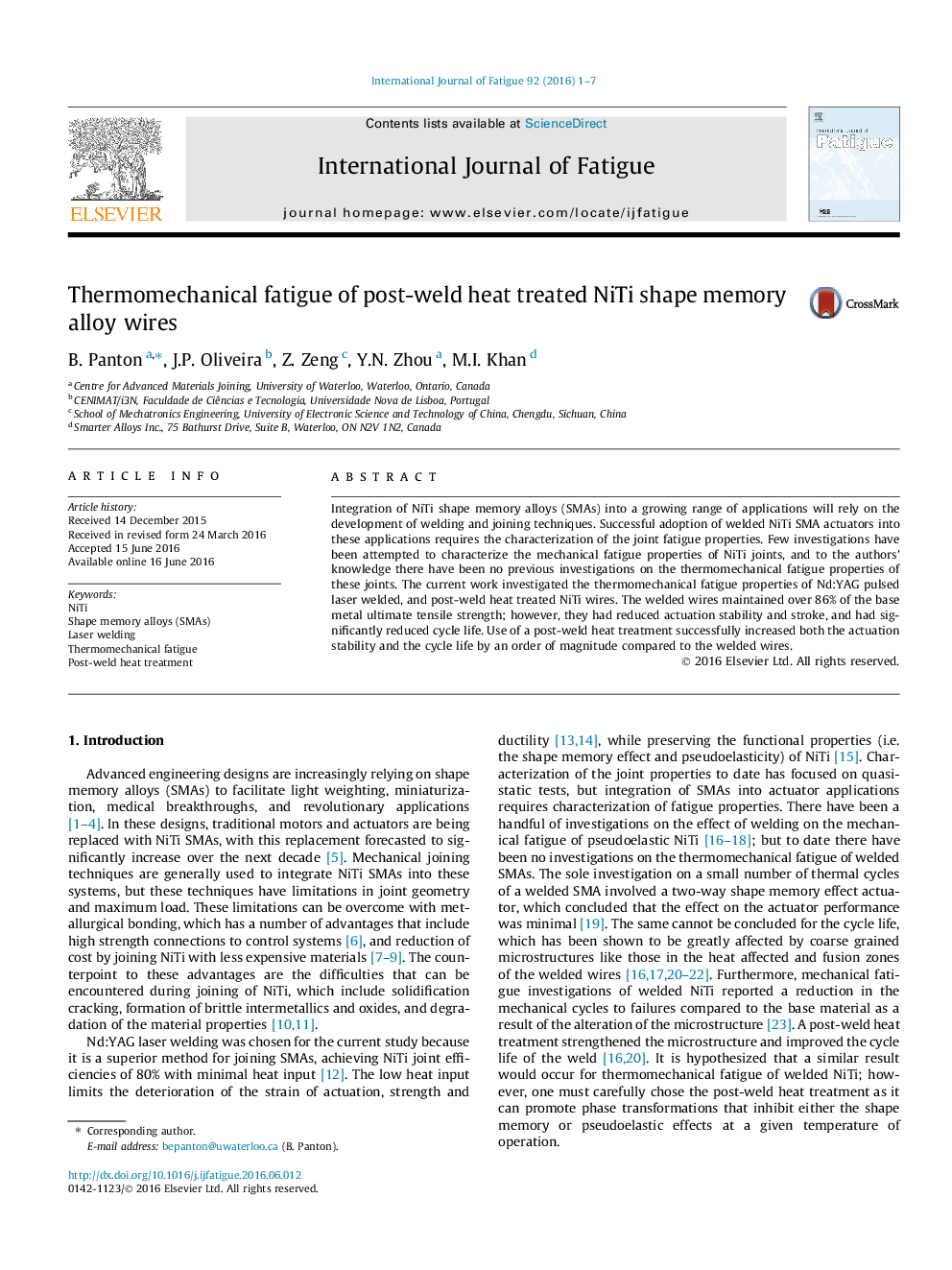| Article ID | Journal | Published Year | Pages | File Type |
|---|---|---|---|---|
| 774755 | International Journal of Fatigue | 2016 | 7 Pages |
•Thermomechanical fatigue of base metal and Nd:YAG laser welded NiTi wires.•The welded wires had greater plastic strain after a smaller number of cycles.•This deformation caused a loss of actuation stability, stroke, and cycle life.•A post-weld heat treatment increased the actuation stability and stroke.•This increased the cycle life of the welded wires by an order of magnitude.
Integration of NiTi shape memory alloys (SMAs) into a growing range of applications will rely on the development of welding and joining techniques. Successful adoption of welded NiTi SMA actuators into these applications requires the characterization of the joint fatigue properties. Few investigations have been attempted to characterize the mechanical fatigue properties of NiTi joints, and to the authors’ knowledge there have been no previous investigations on the thermomechanical fatigue properties of these joints. The current work investigated the thermomechanical fatigue properties of Nd:YAG pulsed laser welded, and post-weld heat treated NiTi wires. The welded wires maintained over 86% of the base metal ultimate tensile strength; however, they had reduced actuation stability and stroke, and had significantly reduced cycle life. Use of a post-weld heat treatment successfully increased both the actuation stability and the cycle life by an order of magnitude compared to the welded wires.
